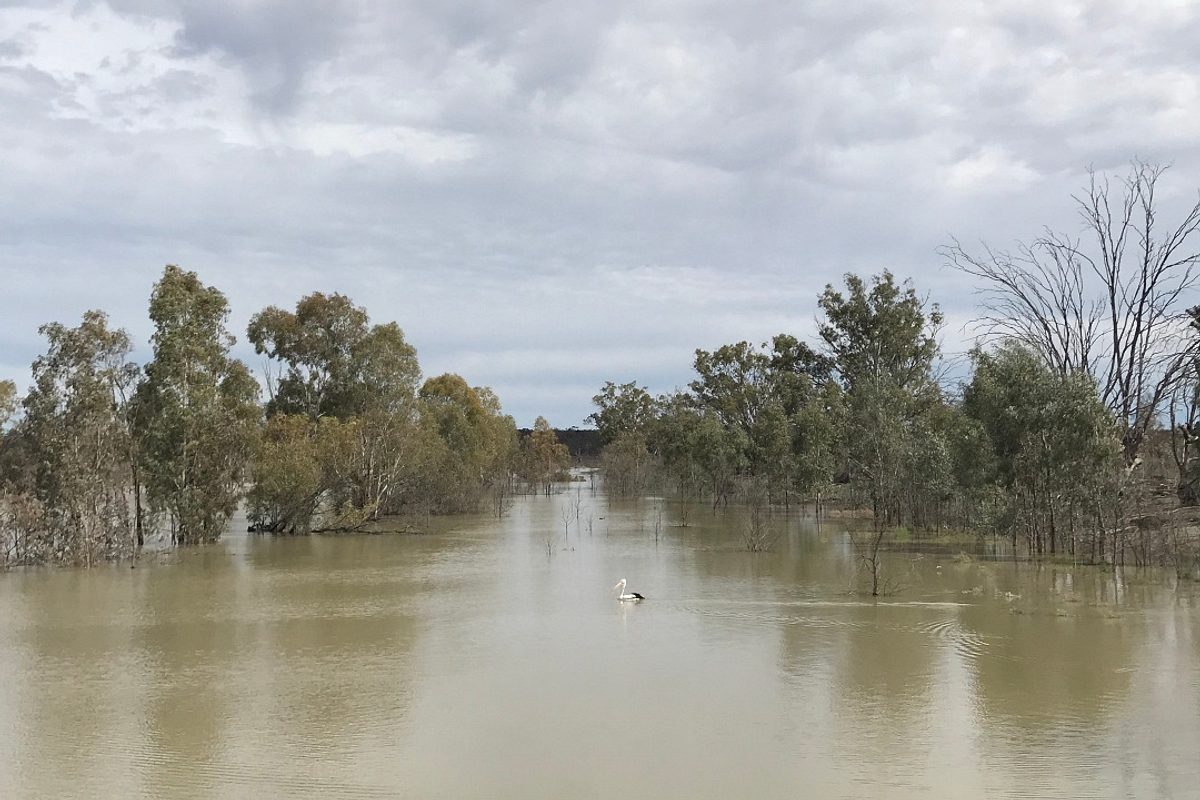Riverine Recovery Project
This project is now completed.
The Riverine Recovery Project (RRP) used adaptive management - iteratively adjusting actions and decisions as new information came to hand - and engineering solutions to restore more natural water flows to critical ecosystems along the River Murray between Wellington and the South Australian border.
The project had a target of providing up to 15 gigalitres of water for the environment to the Australian Government to be used for environmental purposes in the southern-connected basin.
RRP delivered benefits to wetlands and floodplains by efficiently using water for the environment. It also delivered water savings to the Australian Government through reduced evaporation, freeing water up to be used for environmental purposes as part of the Basin Plan’s Sustainable Diversion Limit Adjustment Mechanism.
Underpinning the project was engagement with local stakeholders, including landholders and First Nations.
Key achievements

Early on-ground works
New infrastructure was installed and existing infrastructure upgraded at key inland locations. These allow us to better manage environmental flows.
Local communities, including landowners, irrigators and Aboriginal Nations, worked with government to create a vision for their environment and played a significant role in developing the scope of these projects.
At Pike Floodplain the early on-ground works involved:
- constructing a new inlet regulator at Deep Creek, incorporating a bridge
- improving fish passage
- assessing irrigation infrastructure under various water level scenarios.
Katfish Reach Floodplain:
- upgrading infrastructure to manage the habitat of the vulnerable Murray hardyhead
- improving environmental flow to the Katarapko Island Drainage Basin
- establishing fish passage connectivity within the floodplain.
Yatco Lagoon:
- relocating landholders’ offtakes from the lagoon to the main channel of the river
- installing two additional regulators to assist water flow and fish passage
- supporting the community-developed wetland management plan to enable immediate environmental water savings and improve the visual landscape and ecology.
At Yatco Lagoon, water for the environment savings of around 610 megalitres a year have been made.
- See the Early on-ground works fact sheet.

Wetland management - Phases 1 and 2
This project identified high value wetlands that benefit from the re-introduction of more natural wetting and drying watering cycle.
Activities included:
- developing wetland management plans
- monitoring wetland plants and animals
- constructing infrastructure that attempts to mimic the natural drying and wetting cycles that occurred prior to locks and weirs.
Reinstating wet and dry events provides the following benefits to the environment:
- more productive and diverse flora and fauna
- the creation of temporary seasonal habitats
- carbon cycling and additional nutrients in wetlands
- consolidation of wetland bed sediments to reduce wetland turbidity and improve aquatic vegetation growth
- a reduction in the impacts of pest plants and animals, such as the common carp.

Restoration of the Pike Floodplain
Enhanced management of natural high flow events at Pike Floodplain through improved infrastructure and better connecting the floodplain with the river to facilitate fish passage and improve environmental health.

Restoration of the Katarapko Floodplain
Improved floodplain resilience through restoration works at the Katarapko Floodplain (also known as Katfish Reach Floodplain) to better connect it with the river and facilitate fish passage by removing barriers.

Weir pool manipulation
Investigated and identified opportunities to use weirs to mimic the natural fluctuations in water level that used to occurred prior to river regulation.
Riverine Recovery Project - Impact (full version)
Riverine Recovery Project - Impact (short version)
A number of RRP deliverables were complementary or precursors to the South Australian Riverland Floodplains Integrated Infrastructure Program (SARFIIP).
- For a full description of the project, its implementation, benefits and outcomes, see the RRP Final Report.
The $83.3 million Riverine Recovery Project was funded by the Australian Government (90%) and the Government of South Australia (10%).


